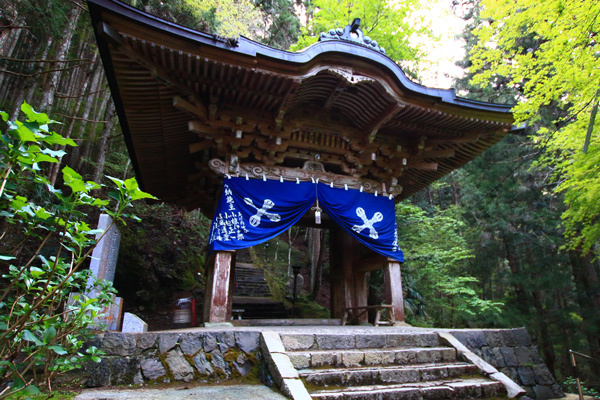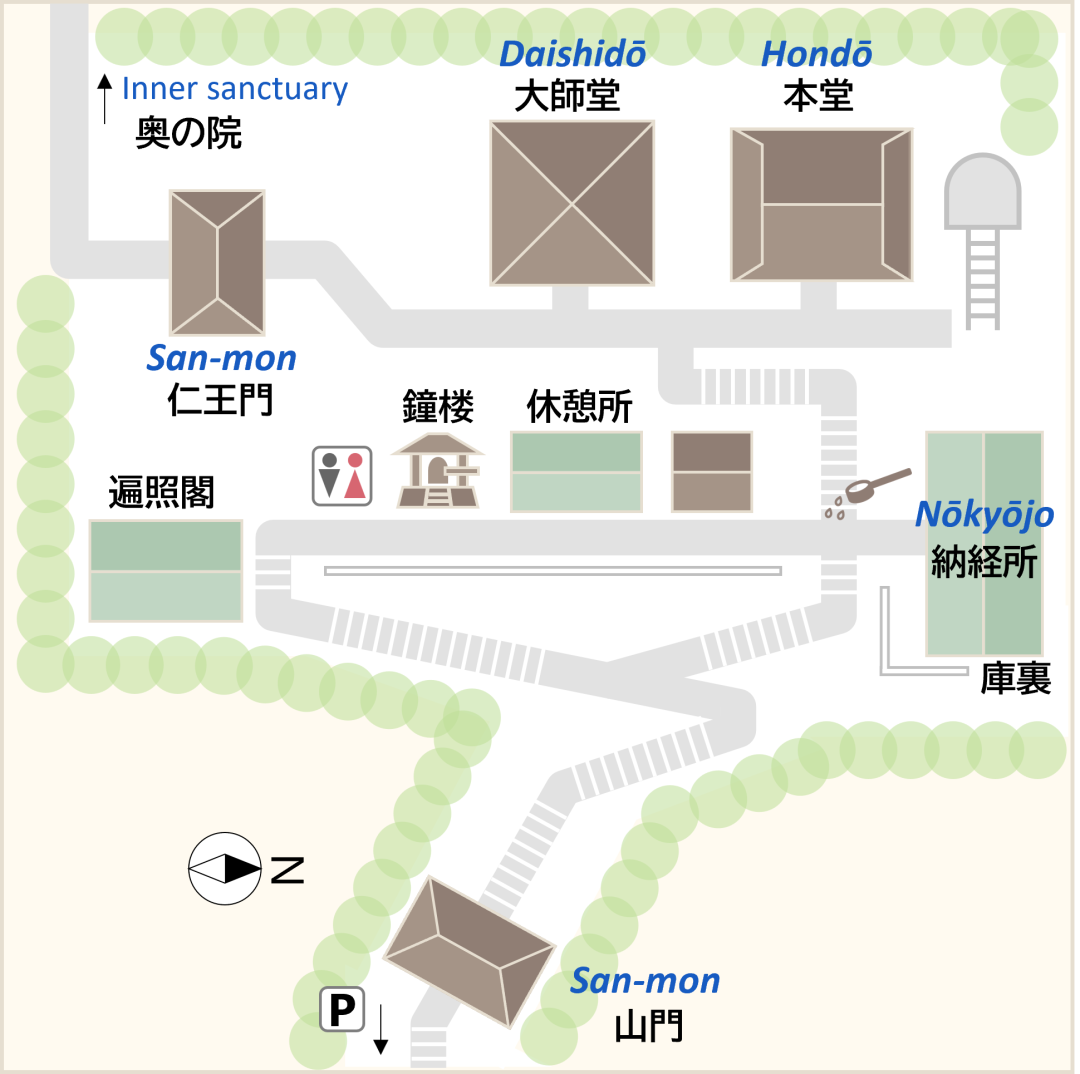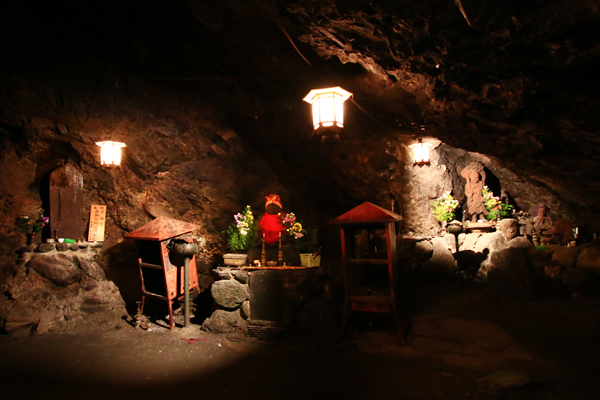The Shikoku Pilgrimage Temple Guide
Temple 45, Iwayaji

Precinct map

History of the temple
At an elevation of 700 meters, Iwayaji is a typical mountain temple where a distinctively-shaped mountain juts into the sky. The temple stands as if embedded in the middle of a huge rock. The mysterious temple grounds have been a training site for ascetic practitioners since ancient times, and various legends have been handed down to the present day.
Kobo Daishi visited this sacred place in 815. At that time, a woman from Tosa (Kochi) was already living in a cave here, engaged in Buddhist training. This woman, Hokke Zamai, is said to have acquired divine powers that enabled her to fly freely through the air. She called herself a Hokke Sennin (a hokke hermit). She was deeply devoted to Kobo Daishi, and offered the mountain to him as a sacred site. Kobo Daishi carved wooden and stone statues of Fudo Myoo and enshrined the wooden statue as the principal image. The stone statue was enshrined in a cave as a hidden Buddha in the inner temple, and the mountain itself became another principal image of the temple, another Fudo Myoo. After carving these statues, he conducted a Goma ceremony.
Ippen Shonin (1239-1289) practiced asceticism at this ancient temple in the middle of the Kamakura Period (1185-1333), as depicted in the book Ippen Hijirie. By the end of the 13th century, in addition to the statues of Fudo Myoo, there was a Gomarodan, a Sennindo, 49 rock sanctuaries, and 33 sacred caves at the temple. In the past, this temple was considered the okunoin (inner sanctuary) of Temple 44, Daihōji, but a head priest was appointed in 1874, formalizing its status as an independent temple. In 1920, the Daishido, which was larger than the Hondo, was rebuilt. The Hondo was rebuilt in 1927, the gate in 1934, and the bell tower in 1952. The Shukubo (temple lodge, no longer open) and the Henjokaku were built in 1963. The Seriwari Fudodo and the Hakusan Gongendo were built in 1978. The Daishido is a nationally designated Important Cultural Property, and the temple area is a national Scenic Beauty Spot as well as a designated Prefectural Natural Park.
Highlights
Ana Zenjo
Jizo-son and other deities are enshrined in a cave at the bottom of the stone steps leading to the Hondo.
Michihiraki Fudo
Fudo is enshrined at the corner below the Nokyojo, behind the Kokuzo Hall.
Seriwari Zenjo
This is one of the ancient mountain ascetic practices. It is located on a mountain path behind the Daishido.

Details
Names: Kaiganzan, Iwayaji
Denomination: Shingon sect, Buzan school
Principal Image: Fudo Myoo
Founded by: Kobo Daishi
Founded: 815
Access
Address: 1468, Shichitori, Kumakogen-cho, Kamiukena District, Ehime 791-1511
Phone: 0892-57-0417
Parking: Available (fee required)
Lodgings: None
Official website: https://shikoku88-iwayaji.com/
